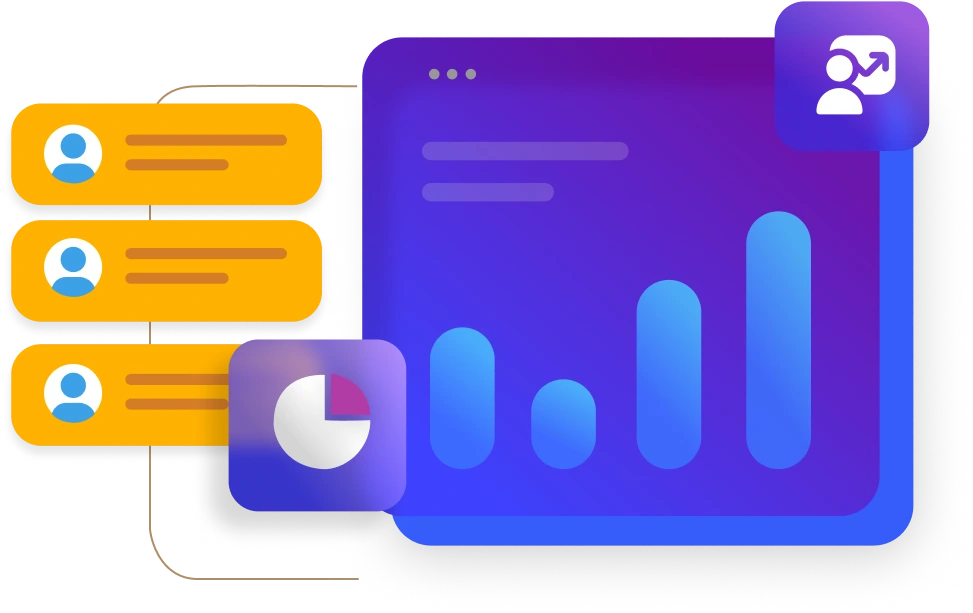Here’s What You Need to Do to Interest Customers in Your Link

Did you know that only about 22% of businesses are happy with how their links are converting?
That means almost 4 out of 5 of you aren’t getting customers to click to your page as you’d like.
It takes a lot of work to set up an effective web presence. It takes a lot of thinking. A lot of designing. A lot of back-and-forth with the people setting it up.
After all that work, the last thing you want to be rewarded with is a lackluster conversion rate and a web page that converts few of its visitors into genuine leads.
That takes us to the question of the day: just how on earth do you get customers interested enough in you that they’re willing to click your link?
1. Speak to Them
See Your Potential ROI with leadpops
See what's possible. Fix it fast.
Sounds kinda vague, right?
But don’t place the emphasis on speak. Place the emphasis on them.
Speak to them. Find out who they are, what their problems are, and what they might be thinking.
Sometimes, an ad or a link doesn’t even have to be perfectly well-written to resonate with its audience. It only needs to offer what your specific audience is missing.
That means identifying the people who are already interested in what you have to offer—and finding a way to get in front of them.
Speaking to them isn’t as much about writing brilliant ads or links as it is simply putting in the homework necessary to identify your target audience.
Book My FREE
Growth Strategy
Session
See what's possible. Fix it fast.

Consider:
- For people who are interested in what you have to sell, what is their preferred medium? Are they on Facebook and social media? Which social media trend younger or older to match your intended crowd?
- What sorts of issues are they currently working through? What is the main emotional pain point that your service can help them with, and how can you do it?
- What is the most unique offer you have that directly addresses these pain points?
Think about it this way: when someone enters a search online, 50% of the time it ends up being four words or longer. That means people have specific questions.
It might seem like you’re limiting yourself when you get more specific about who’s clicking on your link, but the truth is the opposite. You’re expanding your ability to meet the needs of your customers.
You can always go back and create more landing pages and more links to serve a greater audience. But a general, bland link is not going to generate the kind of high-conversion interest you need.
2. Utilize Emotional Triggers
The first step in writing an effective link—or writing any effective copy at all—is to understand that more decisions online are made because of emotional triggers rather than rational ones.
See Your Potential ROI with leadpops
See what's possible. Fix it fast.
There’s a reason for this. People are wired to meet their emotional needs, and in many cases, those needs overlap directly with their most rational needs.
For example, if you serve people in the mortgage market, people might have an emotional desire to acquire a house. Some people even call it “house fever.”
But this same desire comes from a very rational need to lower their monthly lodging payments and secure more equity for themselves. For many people, it’s a perfectly rational financial decision.
Even so, you’ll find that people tend to make decisions like “which link to click on” purely from an emotional place.
Here are a few emotional triggers you’ll want to keep in mind:
- Scarcity. People are more likely to move forward with your link if they feel that they’re jumping on an opportunity. If they feel that your time and resources are scarce, they’re far more likely to click on a link and make sure that they can be a part of what you have to offer. That doesn’t mean they always will, but adding a dimension of scarcity to your content can boost its effectiveness immediately.
- Social proof. Social proof is largely an emotional sales method, more than it is a rational one. When we see other people buying the same thing, we often want to feel like we’re part of the herd. You can incorporate social proof into your links with visuals, statistics that verify the amount of other people already engaging with your services, and anything else that might hint that what you have to offer beyond the link is popular.
- Authority. People are more likely to respond to something if they feel that it’s coming from someone with authority. While we like to think this is a rational decision we make, it’s actually far more of a social/emotional feeling. Does your web site convey a sense of professionalism and authority? Does it look like you have something to offer? That you’re someone they can trust?
Incorporate these elements into your links and landing pages and you’ll find that not only do more people click your links, but that there are plenty of other benefits as well—such as boosting your credibility or getting more people to reach you organically.
Book My FREE
Growth Strategy
Session
See what's possible. Fix it fast.

3. Use a Problem-Solution Method
When you provide a link, you should try to frame that link as the solution to a problem already brought up.
What do we mean by this?
It means that you should try to tell a story. Sometimes, that story can be as simple as a few lines. In other cases, it might be a full direct sales landing page.
Either way, think about the way you present your link as a 1-2 proposition. It’s not just about the link anymore. It’s about the context in which that link appears.
After all, it’s great if you have a link that says “Click here to solve all of your problems!” but without telling a story, people don’t really have a reason to think that it actually will.
See Your Potential ROI with leadpops
See what's possible. Fix it fast.
If you use a hyper-minimalistic conversion page for your link, that 1-2 combination of problem-solution can happen relatively quickly.
For example, you might say “Enter your zip code to receive exclusive offers on mortgages in your area.”
What we have here is context. It might not be a story as complicated as War and Peace, but it’s going to give people an idea of why they should click forward.
The key here is that you want to show people that the most interesting thing is going to happen on the other side of the link.
You don’t want them interested in your site. You want them interested in what your site has to offer them.
That means presenting a link with a little intrigue and a little mystery. How can they get the benefits you promise? What is that going to be like?
Book My FREE
Growth Strategy
Session
See what's possible. Fix it fast.

Make sure that your link is also very clear about what’s being offered. After all, it is the solution in our problem-solution formula.
Once you have that, you’re ready to construct a link that people will be happy to click. Don’t be afraid to experiment with things, run A/B tests, and otherwise continue to refine your link over time, either. The more you optimize it, the more you can count on it making conversions for you for a long time.
To make that whole process even easier, sign up for a free trial of leadPops and gain instant access to conversion optimized, tested & proven lead conversion Funnels.



